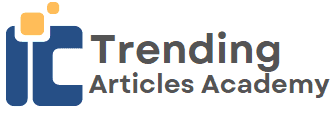HTML Attributes For SEO: Maximizing Search Engine Visibility
In the ever-evolving world of search engine optimization (SEO), HTML attributes play a crucial role in helping search engines understand and rank your content. When used strategically, attributes like the alt tag, hreflang, and nofollow links can significantly improve the visibility and relevance of your website. Let’s explore the most important HTML attributes for SEO and how they can benefit your online presence.
1. Alt Tag for Images
The alt tag image attribute is one of the most important HTML tags for SEO. It provides a textual description of an image, helping search engines understand what the image represents. This not only improves accessibility for visually impaired users but also enhances your site's SEO. Using descriptive, keyword-rich alt text can boost your website’s rankings, especially in image search results.
2. Dofollow and Nofollow Links
Dofollow and nofollow links indicate to search engines whether they should pass SEO value (link juice) from one site to another.
- Dofollow links are default links that signal search engines to follow the link and pass authority from one website to the next.
- Nofollow links are used when you don’t want to transfer SEO value to the linked site. For example, using nofollow for external link can help prevent passing authority to less trusted sites or paid advertisements.
Google's nofollow directive is essential when you want to avoid passing SEO benefits to specific websites. Using nofollow helps maintain your site’s credibility by controlling where your link juice flows.
3. Hreflang for International SEO
Hreflang is an HTML attribute that signals to search engines the language and regional targeting of your page. This is especially important for websites that offer content in multiple languages or target different regions.
For example, if you’re targeting Spanish-speaking audiences, you would use hreflang html Spanish or hreflang html es to specify that the content is in Spanish. When managing international SEO, implementing hreflang international SEO helps ensure the correct version of your page is shown to the appropriate audience.
- Hreflang Spanish HTML: This attribute lets search engines know that your content is in Spanish.
- Hreflang and Canonical: These two attributes often work together. While hreflang helps with language targeting, canonical tags help avoid duplicate content issues. If you have several language versions of the same page, using both hreflang and canonical tags ensures that search engines serve the right content to the right audience without causing ranking issues due to duplicate pages.
4. Canonical Tags for Duplicate Content
The canonical tag is another vital HTML attribute used to indicate the primary version of a page when you have similar or duplicate content across multiple URLs. This is critical to avoid SEO penalties for duplicate content and to ensure search engines understand which page to rank.
5. How Nofollow and Dofollow Impact SEO
Understanding the relationship between nofollow and dofollow links is essential for SEO strategy. While dofollow links pass on authority, nofollow links don't. A healthy balance of both types ensures that your site gains authority without over-relying on less credible sources.
When you link to untrusted or paid content, use nofollow for external links to avoid sharing authority. This practice ensures that your SEO remains strong while still providing valuable resources to your users.
Conclusion
Mastering HTML attributes such as the alt tag, hreflang, canonical, and nofollow can drastically improve your website's SEO performance. Each attribute serves a specific purpose, from enhancing accessibility to optimizing for international audiences. By strategically using these HTML attributes, you can ensure your content reaches the right audience and ranks higher in search engine results.








0 Comments